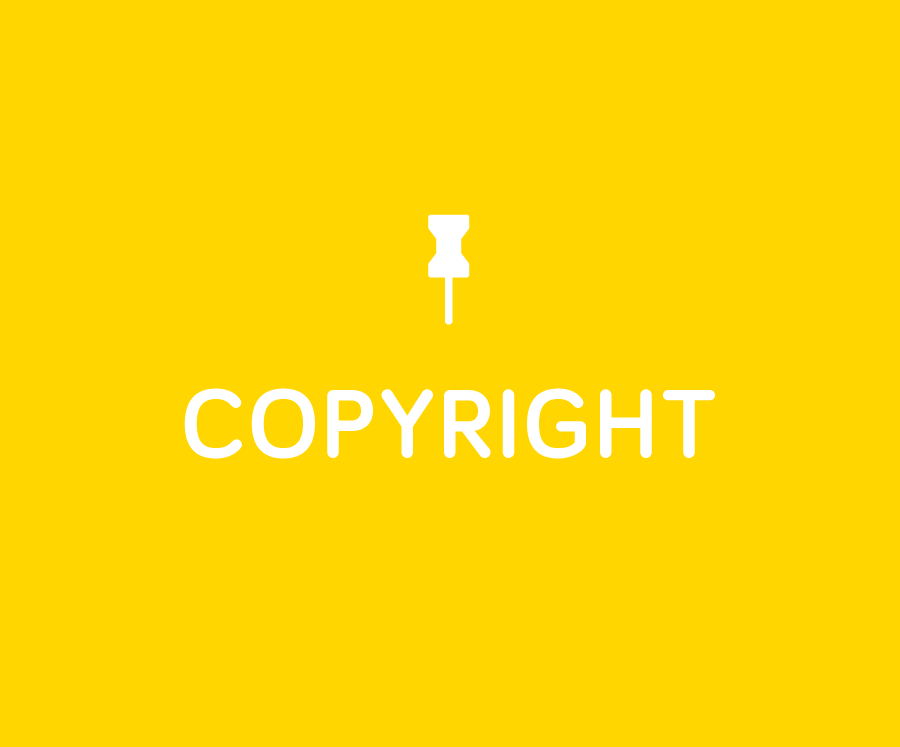
Copyright has always been a grey area in our industry, hard to explain to clients, but critically important to our business.
To put it simply, what we have created (which has copyright on it) is our source of future income. Without it, it is hard for a designer to make a sustainable living. And yes – even though we love what we do and it looks like it’s fun – we still need to put food on the table like everyone else.
WHAT IS COPYRIGHT?
Copyright is the legal right that creators have to prevent others from copying their creative works without their permission.
Copyright is a form of intellectual property that protects a variety of creative works such as design, literature, photography, music, drama, art and recordings. The original creator has the ownership of these creations and therefore the right to determine who may use, profit from or adapt their work to other forms. Where most people are guilty in breaching copyright is by taking images off the internet and using them without permission. This is why we always recommend that clients take their own photos or use images that are purchased from an image stock library.
HOW LONG DOES COPYRIGHT LAST FOR?
Artistic works, including designs, photographs or engravings, are generally protected for 70 years after the end of the year that the creator died. Copyright in a published edition lasts for 25 years from the end of the year the edition is first published.
HOW DOES IT WORK?
Copyright protects the work of creators such as graphic designers, photographers, artists, writers, musicians, and filmmakers. Works are protected as soon as they are created, written down, filmed or recorded. Copyright is automatic and does not have to be applied for.
Copyright ownership is different from the physical ownership of something. For example, if you buy a music CD, you own the CD, but you don’t own the right to copy it. The musician owns the copyright. If you wanted to copy or reproduce it, you would need to obtain their permission to do so.
WHO OWNS COPYRIGHT?
The general rule of thumb under the Copyright Act is, that whoever the creator of the work is, is the first owner of the copyright. Naturally, as in all complex issues, there are exceptions to the rule which include:
Works created during employment – If a creator is employed and produces work for that employer as part of their usual duties, the first owner of copyright will be the employer, unless a previous agreement has been established. This, however, may be different for freelancers or contract workers depending on the terms and conditions of the agreement.
Commissioned works – In general terms, if a graphic artist is commissioned to create an artistic work, the graphic artist will own the copyright, unless there is an agreement to the contrary. In these cases, the client will have the right (“licence”) to use the work for the purposes for which it was commissioned.
BUT I PAID FOR THE WORK TO BE PRODUCED?
What you have paid for is the creators time, you have not paid for their IP (intellectual property). By taking their design without purchasing the copyright, you are depriving the creator of income that they have the right to generate through their creation. A lot of designers are open to the idea of selling their copyright but large agencies hardly ever allow this. Check with the creator as to what their terms and conditions are. Keep in mind that taking the artwork to a different provider without purchasing copyright or having permission is stealing and can result in prosecution.
HOW IS COPYRIGHT INFRINGEMENT DIFFERENT TO PLAGIARISM?
Plagiarism is when a person uses someone else’s work and pretends that it is their own. Copyright is about having to obtain permission to use someone else’s work.
WHY IS COPYRIGHT IMPORTANT?
The whole idea of copyright is intended to protect creative works from being used without the agreement of the owner and to provide an incentive for creators to continue to create new material. Copyright is important because it gives creators control over their work. This means they can decide who uses their work, how it can be used and if they will charge a fee to other people who want to use it. This gives creators the ability to earn a living from their works. Using copyright works without permission is known as copyright theft or piracy.
MAY I PURCHASE COPYRIGHT?
At WRD we openly let our clients know that our work is subject to copyright. Unlike a lot of other mainstream studio’s, we do allow our clients the opportunity to purchase copyright of their logo if they so desire. We do not sell the copyright of our native artwork files (ie the files that are created when producing brochures, business cards etc).
When purchasing the copyright of your logo you will receive the artwork on USB in high and low res format as well as colour and black & white. We also supply you with a comprehensive style guide that helps you maintain your brand integrity. If you have any further questions or are unclear about copyright, we would suggest that you speak to The Australian Copyright Council or IP Australia.